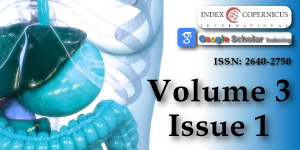Addition of Simvastatin to Carvedilol and Endoscopic Variceal Ligation improves rebleeding and survival in patients with Child-Pugh A and B class but not in Child Pugh C class
Main Article Content
Abstract
Background: Even with current standard treatment after variceal bleeding which includes combination of nonselective b-blockers and repeated endoscopic variceal ligation, the risk of rebleeding and mortality are high. Statins exhibit an antifibrotic effect and improves HVPG. We evaluated whether addition of simvastatin to carvedilol plus EVL therapy reduces variceal rebleeds or death in patients with cirrhosis.
Method: Patients with a variceal bleed 5 to 10 days before were randomly assigned to groups A [carvedilol (n = 69)] or group B [carvedilol (maximum dose - 12.5mg), and simvastatin (40mg/day) (n = 65)]. Primary end points were variceal rebleeding or death. Secondary end points were new complications of portal hypertension and serious adverse effects of drugs.
Results: During a mean follow-up of 49.05 ± 25.74 weeks, composite end point i.e. rebleeding or death developed in 23 patients (33.3%) in group A and 12 patients (18.5%) in group B [HR for simvastatin = 0.512; 95% CI: 0.254 – 1.030; p = 0.06]. In subgroup analysis by excluding patients of Child C class, 18 patients (34.6%) in group A and 7 patients (13.6%) in group B developed composite end point [HR for simvastatin = 0.369; 95% CI: 0.154 – 0.887; p = 0.026]. 17.4% and 15.4% patients in group A and B developed additional secondary complication [HR = 0.86; 95% CI: 0.345-2.161; p = 0.75). No simvastatin induced significant adverse effects were found.
Conclusion: Addition of simvastatin to carvedilol and EVL may reduce the rebleeding and death in patients with less advance liver disease.
Article Details
Copyright (c) 2019 Jha SK, et al.

This work is licensed under a Creative Commons Attribution 4.0 International License.
Abraldes JG, Tandon P. Therapies: Drugs, Scopes and Transjugular Intrahepatic Portosystemic Shunt-When and How? Dig Dis. 2015; 33: 524-533. PubMed: https://www.ncbi.nlm.nih.gov/pubmed/26159269
Graham DY, Smith JL. The course of patients after variceal hemorrhage. Gastroenterology. 1981; 80: 800-809. PubMed: https://www.ncbi.nlm.nih.gov/pubmed/6970703
Garcia-Pagan JC, Villanueva C, Albillos A, Bañares R, Morillas R, et al. Nadolol plus isosorbide mononitrate alone or associated with band ligation in the prevention of recurrent bleeding: a multicenter randomized controlled trial. Gut .2009; 58: 1144-1150. PubMed: https://www.ncbi.nlm.nih.gov/pubmed/19218249
Ripoll C, Groszmann R, Garcia-Tsao G, Grace N, Burroughs A, et al. Portal Hypertension Collaborative Group. Hepatic venous pressure gradient predict clinical decompensation in patients with compensated cirrhosis. Gastroenterology. 2007; 133: 481-488. PubMed: https://www.ncbi.nlm.nih.gov/pubmed/17681169
Vorobioff J, Picabea E, Villavicencio R, Puccini V, Rossi O, et al. Acute and chronic hemodynamic effects of propranolol in unselected cirrhotic patients. Hepatology. 1987; 7: 648-653. PubMed: https://www.ncbi.nlm.nih.gov/pubmed/3610045
Lebrec D, Hillon P, Munoz C, Goldfarb G, Nouel O, Benhamou JP. The effect of propranolol on portal hypertension in patients with cirrhosis: a hemodynamic study. Hepatology. 1982; 2: 523-527. PubMed: https://www.ncbi.nlm.nih.gov/pubmed/6981575
Sinagra E, Perricone G, Amico MD, Tin F. Systematic review with meta-analysis: the hemodynamic effects of carvedilol compared with propranolol for portal hypertension in cirrhosis. Aliment Pharmacology Therapy. 2014; 39: 557-568. PubMed: https://www.ncbi.nlm.nih.gov/pubmed/24461301
Lo GH, Chen WC, Wang HM, Yu HC. Randomized controlled trial of carvedilol versus nadolol plus isosorbide mononitrate for the prevention of variceal rebleeding. J Gastroenterology Hepatology. 2012; 27: 1681-1687. PubMed: https://www.ncbi.nlm.nih.gov/pubmed/22849337
Thomas Reiberger, Gregor Ulbrich, Arnulf Ferlitsch, Berit Anna Payer, Philipp Schwabl, et al. Carvedilol for primary prophylaxis of variceal bleeding in cirrhotic patients with hemodynamic non-response to propranolol. Gut. 2013; 62: 1634-1641. PubMed: https://www.ncbi.nlm.nih.gov/pubmed/23250049
Martin Janicko, Sylvia Drazilova, Daniel Pella, Jan Fedacko, Peter Jarcuska. Pleiotropic effects of statins in the diseases of the liver. World J Gastroenterol. 2016; 22: 6201-6213. PubMed: https://www.ncbi.nlm.nih.gov/pubmed/27468210
Marrone G, Maeso-Díaz R, García-Cardena G, Abraldes JG, García-Pagán JC, et al. KLF2 exerts antifibrotic and vasoprotective effects in cirrhotic rat livers: behind the molecular mechanisms of statins. Gut. 2015; 64: 1434-1443. PubMed: https://www.ncbi.nlm.nih.gov/pubmed/25500203
Abraldes JG, Albillos A, Bañares R, Turnes J, González R, et al. Simvastatin lowers portal pressure in patients with cirrhosis and portal hypertension: a randomized controlled trial. Gastroenterology. 2009; 136: 1651-1658. PubMed: https://www.ncbi.nlm.nih.gov/pubmed/19208350
de Franchi R, Baveno VI. Expanding consensus in portal hypertension Report of the Baveno VI Consensus Workshop: Stratifying risk and individualizing care for portal hypertension. Journal of Hepatology. 2015; 63: 743-752. PubMed: https://www.ncbi.nlm.nih.gov/pubmed/26047908
Pollo-Flores P, Soldan M, Santos UC, Kunz DG, Mattos DE, et al. Three months of simvastatin therapy vs. placebo for severe portal hypertension in cirrhosis: A randomized controlled trial. Dig Liver Dis. 2015; 47: 957-963. PubMed: https://www.ncbi.nlm.nih.gov/pubmed/26321186
Abraldes JG, Villanueva C, Aracil C, Turnes J, Hernandez-Guerra M, et al. Addition of Simvastatin to Standard Therapy for the Prevention of Variceal Rebleeding Does Not Reduce Rebleeding but Increases Survival in Patients With Cirrhosis. Gastroenterology. 2016; 150: 1160-1170. PubMed: https://www.ncbi.nlm.nih.gov/pubmed/26774179
Trebicka J, Hennenberg M, Laleman W, Shelest N, Biecker E, et al. Atorvastatin lowers portal pressure in cirrhotic rats by inhibition of RhoA/Rho-kinase and activation of endothelial nitric oxide synthase. Hepatology. 2007; 46: 242-253. PubMed: https://www.ncbi.nlm.nih.gov/pubmed/17596891
La Mura V, Pasarin M, Meireles CZ, Miquel R, Rodríguez-Vilarrupla A, et al. Effects of simvastatin administration on rodents with lipopolysaccharide-induced liver microvascular dysfunction. Hepatology. 2013; 57: 1172-1181. PubMed: https://www.ncbi.nlm.nih.gov/pubmed/23184571
Zafra C, Abraldes JG, Turnes J, Berzigotti A, Fernández M, et al. Simvastatin enhances hepatic nitric oxide production and decreases the hepatic vascular tone in patients with cirrhosis. Gastroenterology. 2004; 126: 749-755. PubMed: https://www.ncbi.nlm.nih.gov/pubmed/14988829
El-Serag HB, Johnson ML, Hachem C, Morgana RO. Statins are associated with a reduced risk of hepatocellular carcinoma in a large cohort of patients with diabetes. Gastroenterology. 2009; 136: 1601-1608. PubMed: https://www.ncbi.nlm.nih.gov/pubmed/19208359
Motzkus-Feagans C, Pakyz AL, Ratliff SM, Bajaj JS, Lapane KL. Statin use and infections in Veterans with cirrhosis. Aliment Pharmacol Ther. 2013; 38: 611-618. PubMed: https://www.ncbi.nlm.nih.gov/pubmed/23889738
Kaplan DE. The Use of Statins in Patients with Cirrhosis. Gastroenterol Hepatol. 2018; 14: 485-487.
Armitage J,Bowman L, Wallendszus K, Bulbulia R, Rahimi K, et al. Intensive lowering of LDL cholesterol with 80 mg versus 20 mg simvastatin daily in 12,064 survivors of myocardial infarction: a double-blind randomised trial. Lancet. 2010; 376: 1658-1669. PubMed: https://www.ncbi.nlm.nih.gov/pubmed/21067805

